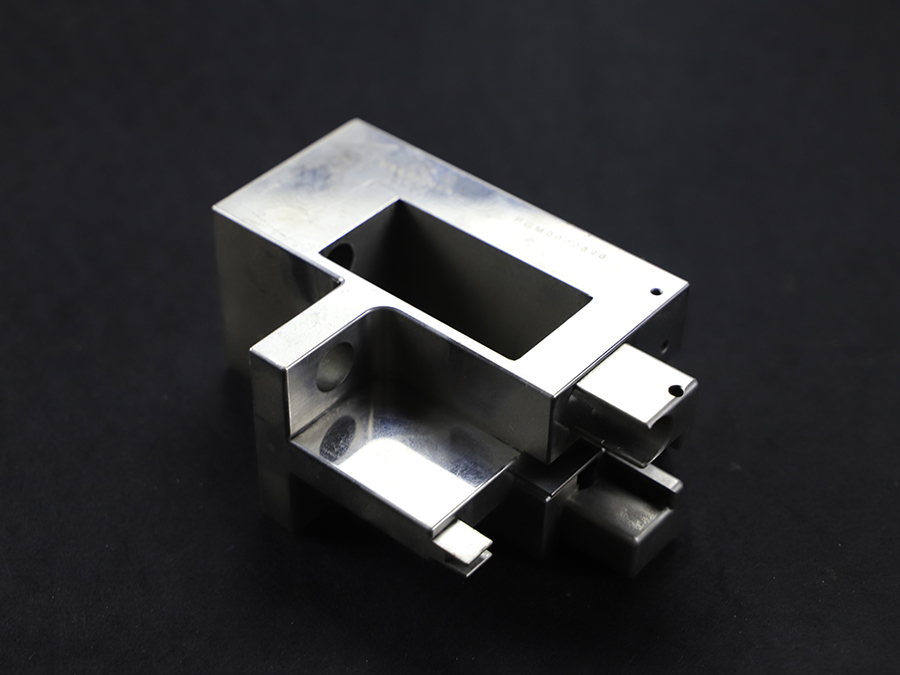First, programming skills
1. Processing of parts:
Drill the flat end first (this is to prevent shrinkage when drilling);
First rough the car, then fine the car (this is to ensure the accuracy of the parts);
The processing of the large-scale service is small (this is to ensure that the surface of the small service is not scratched and prevent deformation of the parts).
2. Select the correct speed, feed and depth of cut according to the hardness of the raw material:
1) Carbon steel raw materials choose high speed, high feed rate and large depth of cut. Such as: 1Gr11, choose S1600, F0.2, depth of cut 2mm;
2) Cemented carbide selects low speed, low feed rate and small depth of cut. Such as: GH4033, choose S800, F0.08, cut depth 0.5mm;
3) Titanium alloy selects low speed, high feed rate and small depth of cut. Such as: Ti6, select S400, F0.2, depth of cut 0.3mm. Take a part of the processing as an example: the raw material is K414. This raw material is a special hard material. It is tested repeatedly at the beginning and end. The choice is S360, F0.1 and depth of cut 0.2 to process the passing parts.

The tool is divided into the tool setting tool and the direct tool setting. Most of the lathes in our factory have no tool setting instrument. It is a direct tool setting. The tooling technique mentioned below is a direct tool setting.
First select the center of the right end of the part as the tool point and set it to zero. After the machine returns to the origin, each tool used in the demand is zero point to the center of the right end of the part; the tool touches the right end and inputs Z0 to measure. The value of the measured value is automatically recorded inside the tool's tool compensation value. This means that the Z axis is correct for the tool. The X tool is the trial cutting tool. The outer circle of the tool car part is less, and the outer circle value is measured. If x is 20mm) input x20, click on the measurement, the tool compensation value will automatically record the measured value, then the x-axis is also correct; this tool-setting method, even if the machine is powered off, the call will not change after the restart. The value of the knife can be used to make the same parts in a large batch of long-term light. During the closing of the lathe, there is no need to cut the knife from the beginning. Third, debugging skills
After the parts are programmed, the requirements for good knives are tested and debugged. In order to prevent errors in the program and mistakes in the knives, a collision event is formed. We should first perform the empty-stroke simulation processing, which is internal to the coordinate system of the machine tool. The tool translates the total length of the part to the right by 2 to 3 times. Then, the simulation process is started. After the simulation is completed, the program and the tool are correct. Then the part is processed. After the first part is processed, first check and confirm. Passing, then looking for professional inspection and inspection, after the professional inspection confirmed the pass, this indicates the end of commissioning.
Fourth, prevent the collision of machine tools
The collision of the machine tool is a great infringement on the accuracy of the machine tool. The influence of the machine tool on the difference category is also different. Generally speaking, the machine tool with less rigidity is more affected. Therefore, in the case of high-precision CNC lathes, the collision must be absolutely blocked. As long as the operator is careful and in charge of the anti-collision method, the collision is completely preventable and preventable.
The main point of collision occurs: one is the input error of the diameter and length of the tool; the other is the input error of the workpiece size and the remaining associated geometry and the initial position of the workpiece; the third is the workpiece coordinate system configuration error of the machine tool. Perhaps the zero point of the machine tool is reset during the machining process, and the machine tool collision occurs mostly during the rapid movement of the machine tool. The collision of this time is also a great hazard and should be absolutely prevented. Therefore, the operator should pay special attention to the machine tool in the initial stage of the implementation of the program and the time when the machine tool is changing the tool. At this time, once the program is programmed to be wrong, the diameter and length of the tool are input incorrectly, then the collision is very easy. At the end of the program, the retraction behavior of the CNC axes is sequentially wrong, and collisions may occur.
In order to prevent the above collision, the operator should fully carry forward the performance of the facial features when operating the machine tool, whether the machine tool has special behavior, whether there is spark, whether there is noise and extraordinary noise, whether there is sensation or not. If the abnormal condition is found, the program should be stopped immediately, and the machine can continue to work after the standby bed problem is processed.
Only by focusing on precise manipulation can we prevent the impact of mishandling mistakes. Trusting everyone has learned a lot in this article. Welcome to continue to pay attention to us. We will introduce the knowledge of such CNC lathe processing and control skills from time to time. For everyone to learn.

